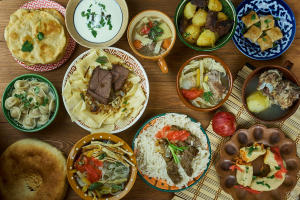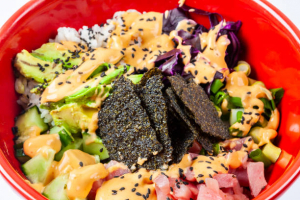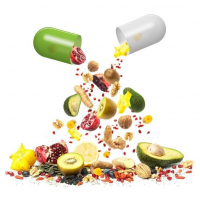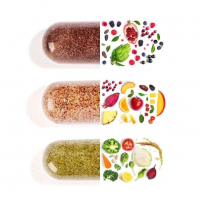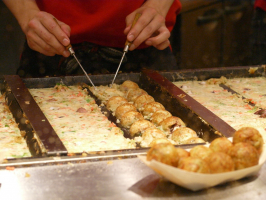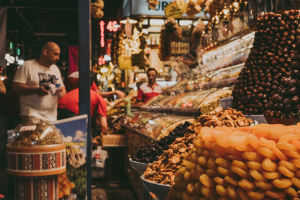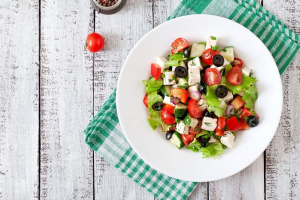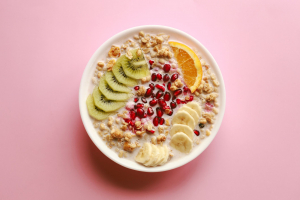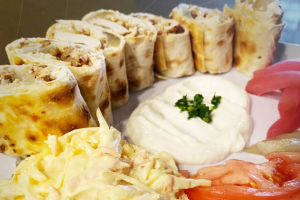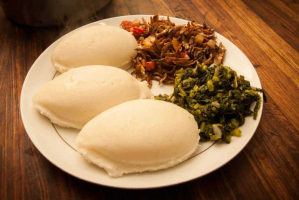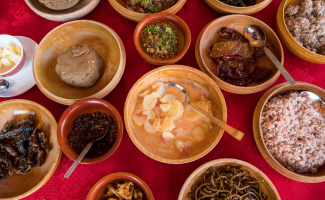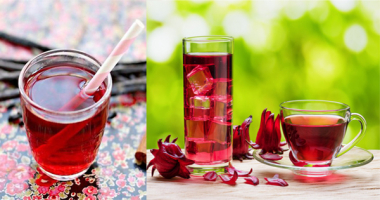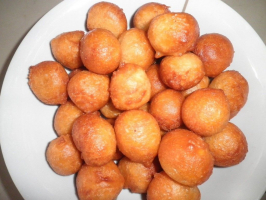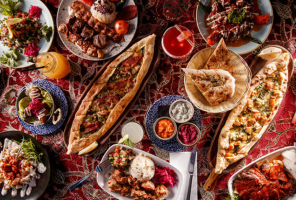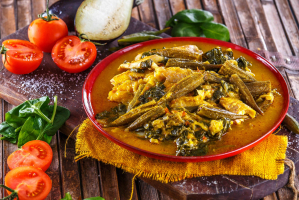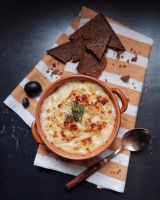Top 10 Best Bakistani Foods
Pakistani cuisine is rich, spicy, ghee-rich, and extremely delicious. Toplist will share with you the greatest meals you must try in Pakistan in this list of ... read more...the ten must-try dishes to eat in Pakistan. Get ready for some serious Pakistani flavor and regional specialties.
-
Chaat is an umbrella term for a wide range of Indian street foods, snacks, and small meals that typically combine salty, spicy, sweet, and sour flavors. Chaat is derived from the Hindi verb chaatna, which means to lick, and may refer to the finger-licking good quality of the dishes.
Chaats are typically small, served as a snack or combined with other dishes to form a larger meal. Chaat can be found at chaatwallas (street vendors) throughout India, Pakistan, and Bangladesh, serving a variety of dishes ranging from stuffed bread to deep-fried pastries with accompanying dipping sauces.
In India, a chaat stand typically specializes in one or two dishes that are always prepared fresh. If chaat is served in a larger restaurant, it is frequently accompanied by lassi, a traditional Indian drink. Chaat dishes are popular due to their wide variety: from crispy fried potatoes, sevpuri, and pakora to chila pancakes with chutney and pav bhaji, there is a chaat dish for every type of consumer.
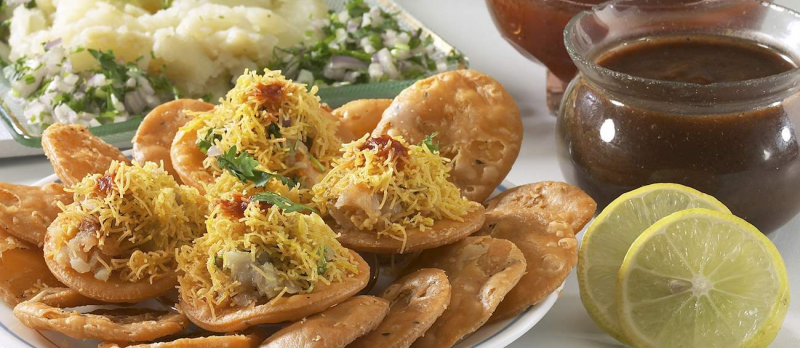
https://www.tasteatlas.com/ 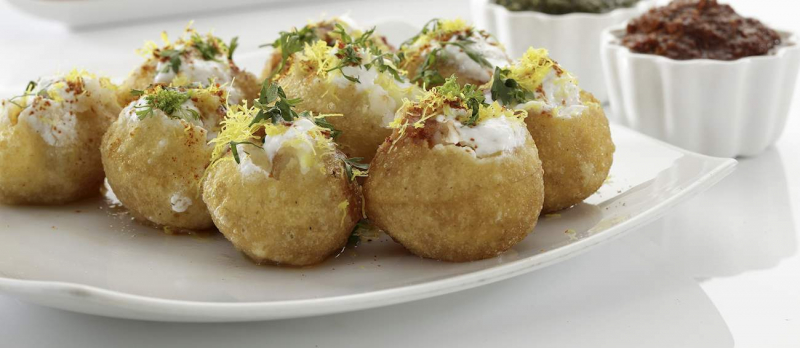
https://www.tasteatlas.com/ -
Chicken karahi is a popular poultry dish in Pakistan and North India. In its name, the word karahi refers to a thick and deep cooking pot, similar to a wok, in which the dish is prepared. The dish also includes red chili powder, cumin, garam masala, ginger, allspice, cardamom, tomatoes, and garlic. The dish is known as gosht karahi when made with mutton. It's usually served with rice, roti, or naan.
Karahi is said to have originated in Pakistan's Khyber Pakhtunkhwa (formerly Northwest Frontier) province, which makes sense given the cuisine's heavy use of meat and black pepper.
The rich, tomatoey base of chicken karahi is distinguished by a fragrant finishing of green chili peppers, cilantro, and slivers of ginger. Karahi is named after the pan in which it was first cooked – a heavy, often cast-iron pan similar to a wok but rounder and with a flatter base. Traditionally, meat would be simmered and stir-fried over an open fire in this karahi.
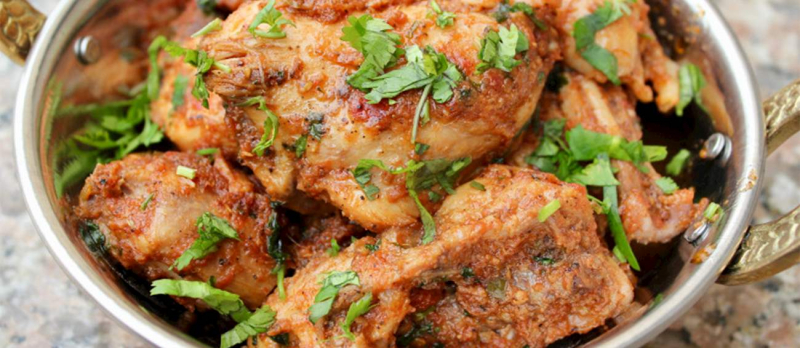
https://www.tasteatlas.com/ 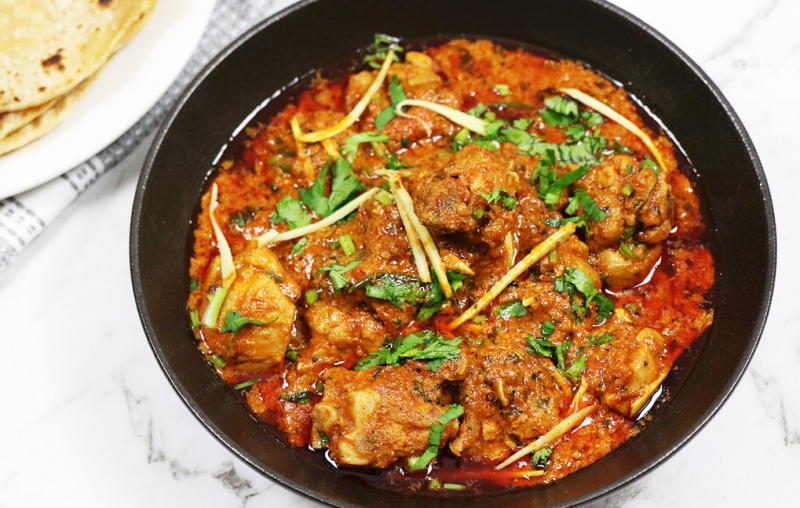
satyamskitchen.com -
This spicy meat patty is a Pashtun specialty made with a combination of minced beef or mutton. Chapli kabab's distinct flavor is derived from spices such as dried coriander and pomegranate seeds, green chilies, and mint. Its name is derived from the Pashto word chaprikh, which means flat, and while it is often said to have originated in Peshawar, it is now a favorite throughout Pakistan, Afghanistan, and India.
Originally made with beef in Peshawar, it is now also available with chicken and lamb. Chapli Kabab recipes have evolved over time, with regional spices being added. However, in Peshawar, Chapli Kababs are still made with minimal ingredients.
Chapli kababs are popular in Dhaka, Bangladesh. However, it is most popular during Eid-ul-Azha and Ramadan as part of iftar. Chapli Kabab is also available as street food in the Indian cities of Bhopal, Lucknow, Delhi, and Hyderabad, which have a higher Muslim population density. Traditionally, chapli kababs are served with yogurt sauce, salads, and naan bread.
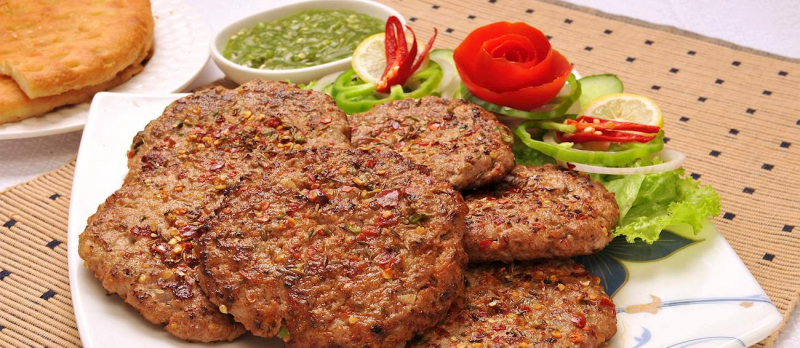
https://www.tasteatlas.com/ 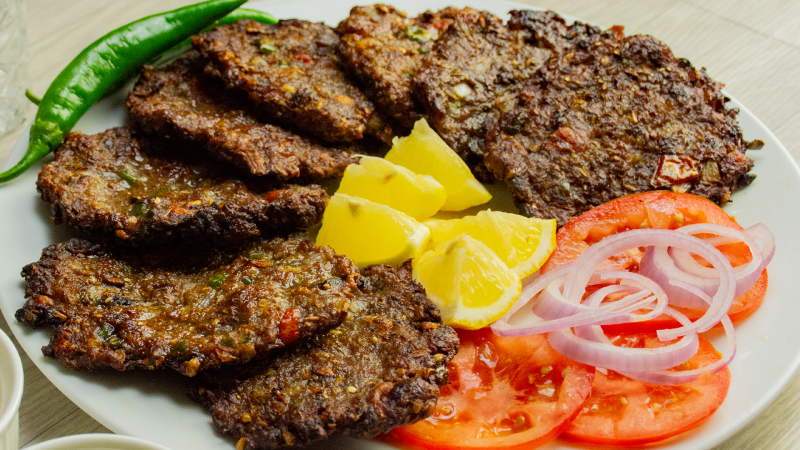
todayzfoods.com -
Another popular Pakistani dish is Samosas. Samosas, with their crunchy texture and variety of flavors, are an excellent introduction to the world of Indian cuisine for newcomers. These deep-fried triangular pastries are filled with a variety of vegetables and meats, including onions, lentils, spiced potatoes, peas, or ground meat.
The popular golden-brown snack is said to have made its way to India via old trade routes from Central Asia. These savory triangles are typically served hot with chopped onions, yogurt, or fresh, homemade Indian chutneys made with ingredients such as mint, coriander, or tamarind.
However, not all samosas are savory; some varieties can include a variety of sweet ingredients such as pomegranate, mango, and raisins. Sweet or savory, they can be found at numerous street stalls and roadside eateries throughout India, freshly made and traditionally paired with masala chai tea. If you intend to travel to Pakistan, this dish must be definitely tried.
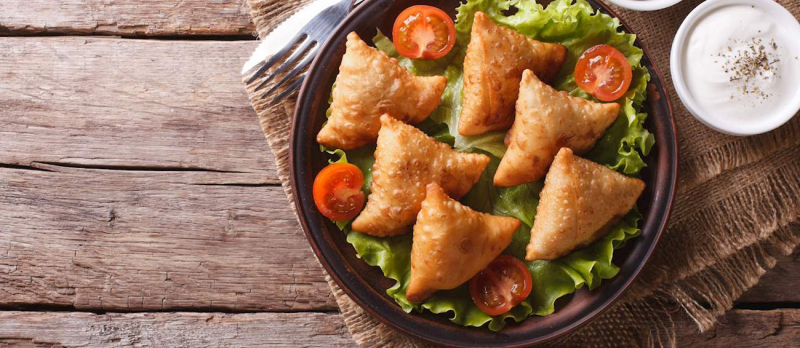
https://www.tasteatlas.com/ 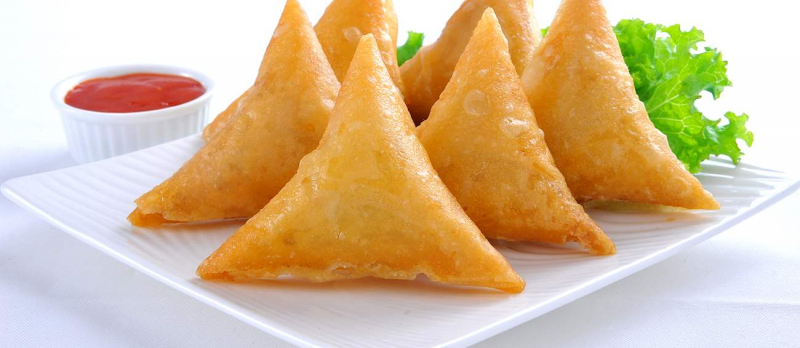
https://www.tasteatlas.com/ -
The seekh kebab is a type of kebab that originated in India and Pakistan and is popular throughout South Asia. Spiced, minced, or ground meat, usually lamb, beef, or chicken, is formed into cylinders on skewers and grilled. It's usually cooked on a mangal or grill, or in a tandoor.
Seekh kabab is a tasty, juicy Pakistani kebab made with minced meat, onions, garlic, ginger, coriander, lemon juice, yogurt, and garam masala. The spices used in the dish can be changed to suit personal tastes.The meat mixture is skewered, and the kebabs are grilled over hot coals, imparting a nice smokey flavor, though they can also be prepared in a tandoor oven. Seekh kabab is typically served hot with salads, onions, fries, mint chutney, or flatbreads on the side. The dish can be served as an appetizer or as a main course. If you intend to travel to Pakistan, this dish must be definitely tried.
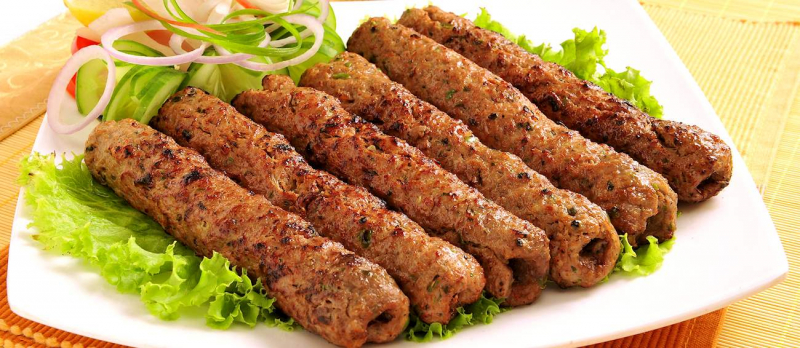
https://www.tasteatlas.com/ 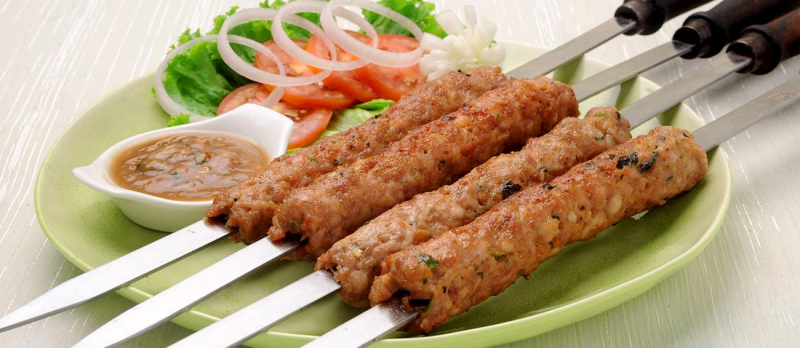
https://www.tasteatlas.com/ -
Sajji is a popular Pakistani dish from the Balochistan province. It is made up of marinated, skewered, and roasted lamb or chicken. The meat is typically marinated in salt, but it can also be stuffed with potatoes and rice or combined with green papaya paste.
It is commonly prepared with whole lamb or chicken, or large pieces of lamb or goat (like the leg of a goat). Whole lambs, chickens, and other meats are skewered, marinated in simple spices, and roasted over coals. They are occasionally stuffed with rice. It's the brown version of a regular rotisserie chicken. The Sajji is juicy and moist on the inside, with a crisp skin on top!
Whole chickens are traditionally roasted over an open fire, with the burning wood imparting a smoky flavor to the meat. When properly prepared, the meat should be crisp on the outside while remaining juicy and tender on the inside, and customers frequently squirt lemon juice over the meat before eating. Sajji is best served with rice, naan bread, and raita dip.
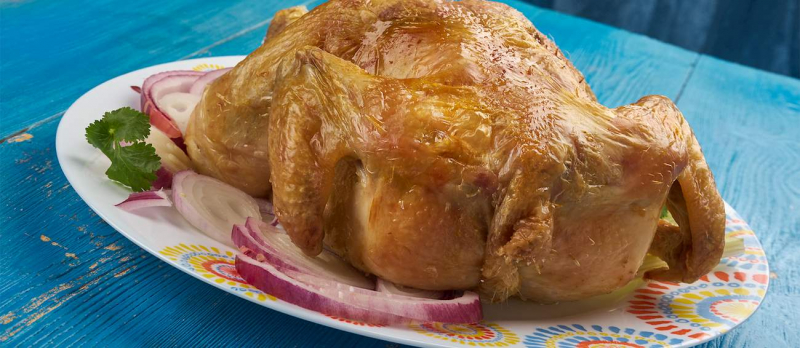
https://www.tasteatlas.com/ 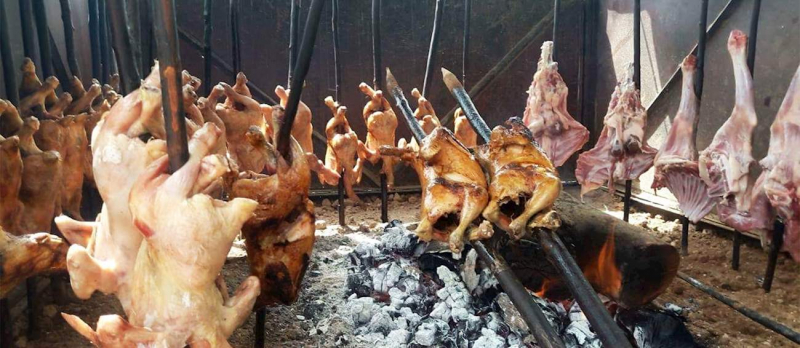
https://www.tasteatlas.com/ -
Nihari is a traditional meat-based dish from Old Delhi. When Pakistan gained independence in 1947, a large number of immigrants from Delhi settled in Karachi and opened their own restaurants, so nihar is also associated with Pakistani cuisine.
Slow-cooked meat, such as beef shanks, mutton, or chicken, is used in this dish. In large vessels sealed with dough, the meat is cooked with stock and a variety of spices such as cumin, cloves, garam masala, and cardamom. It takes anywhere from six to eight hours to properly cook nihari, and it is traditionally consumed for breakfast, as the dish's name is derived from the Arabic word nahar, which means "morning."
Nihari was originally consumed as a breakfast dish by the Nawabs of the Mughal Empire before the usual morning prayers, though some believe the dish was invented in the royal kitchens of Awadh. It is typically served with tandoori rotis or khameeri rotis, and some people like to top nihari with green chilis. Nihari is a favorite among many Indian and Pakistani people because of its texture, spiciness, and tenderness of the meat.
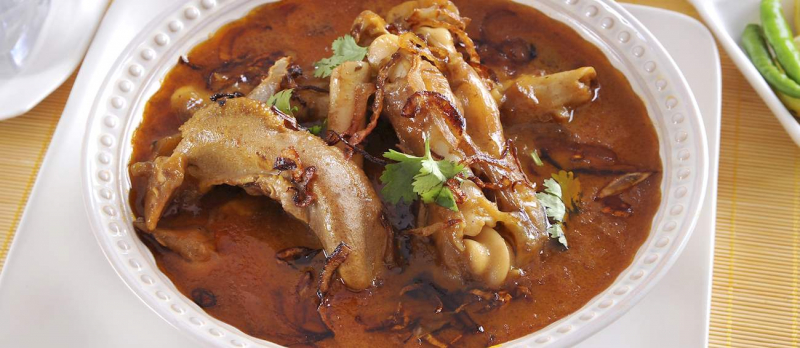
https://www.tasteatlas.com/ 
https://www.tasteatlas.com/ -
Paratha is a type of Indian bread that is golden-brown in color, flaky and layered, and is typically eaten for breakfast. The name is derived from the words parat and atta (flour), and refers to the cooked, layered dough. It is made of whole wheat flour and baked in ghee (Indian clarified butter). It is available in round, triangular, square, or heptagonal shapes.
Boiled potatoes, cauliflower, garlic, ginger, chili, paneer, or radish are common fillings for parathas. Pickles, yogurt, homemade chutneys, or meat and vegetable curries are sometimes served with them. Paratha is traditionally served with lassi, a popular yogurt-based drink in Punjab.
Although the flatbread originated in Peshawar, Pakistan, it has since spread throughout India and can be found at a variety of street stands and roadside eateries. Parotta is the name given to the southern Indian version. Another way to eat paratha is to shape it into a pipe and dip it in tea. Parathas are irresistible in the morning because they are versatile, buttery, and aromatic, and this may be the key to their popularity.
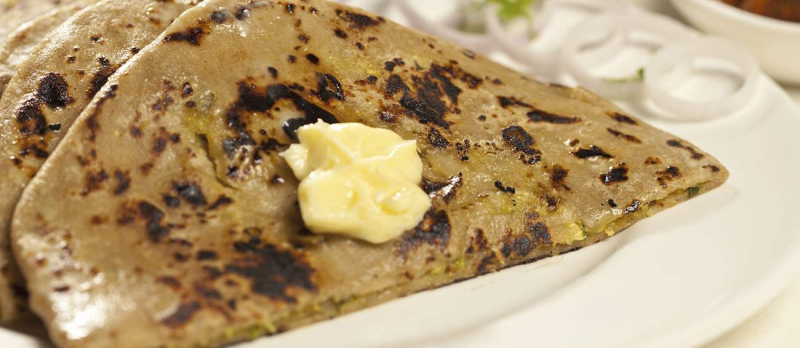
https://www.tasteatlas.com/ 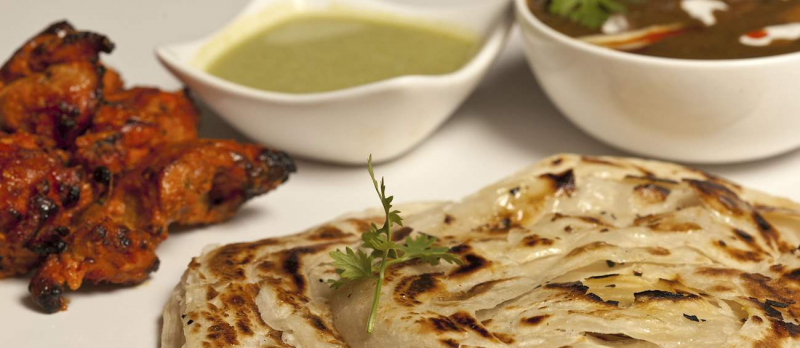
https://www.tasteatlas.com/ -
The bright yellow zarda is a sweet and fragrant Pakistani rice dish made with basmati rice, milk, and sugar. The rice is cooked with natural food colorings to give the dish its unusual yellow color, as well as a blend of traditional spices, most notably cardamom, cinnamon, and saffron.
Raisins and chopped roasted nuts like pistachios, almonds, or walnuts are frequently added. Zarda is a rich and festive dish that is typically served on special occasions, but it also makes an excellent everyday dessert when served warm with a cup of refreshing tea.
It is without a doubt one of the most visually appealing Pakistani desserts available – it doesn't even require much garnishing to look stunning! Aside from its lovely color and the colorful speckling of nuts and raisins. Traditionally, Zarda was served on happy occasions such as weddings and Eid.
A similar dessert can also be found in the Punjabi region, where it is known as meethe chawal.
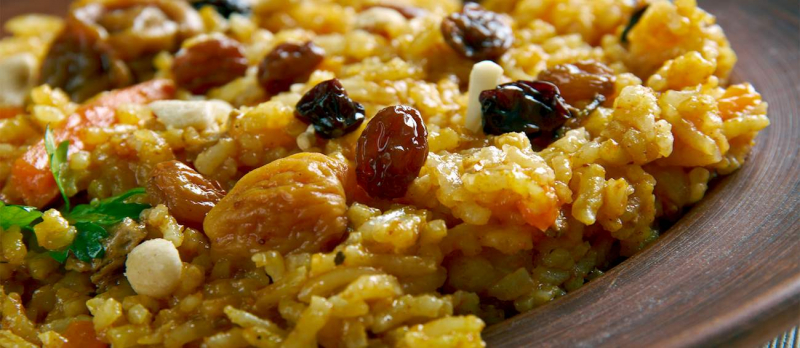
https://www.tasteatlas.com/ 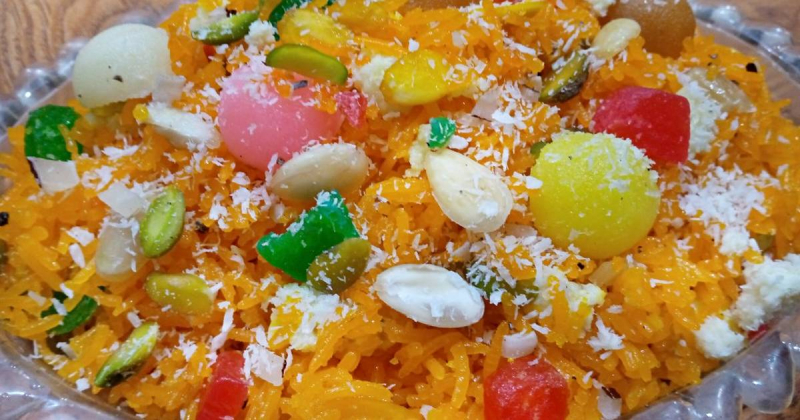
hebbarskitchen.com -
Halwa poori is a traditional Pakistani and Indian breakfast consisting of semolina pudding or halwa and a soft fried dough known as poori. Halwa is typically made from fried semolina and sugar syrup, which is then combined with nuts like pistachios and almonds.
The sweet dish is flavored with aromatics such as green cardamom pods, kewra essence, and cloves, and it is usually brightened with yellow or orange food coloring. Poori is a soft and fluffy fried bread made from a dough of flour, water, salt, and oil.
It is typically shaped into a thin, flat disk and deep-fried until it puffs up. Traditional accompaniments for fresh and hot poori are sweet semolina halwa or sooji halwa. Aaloo ki bhaji, a flavor-packed potato dish, and cholay, a Pakistani dish based on chickpeas combined with spices, are two other common accompaniments to halwa poori.
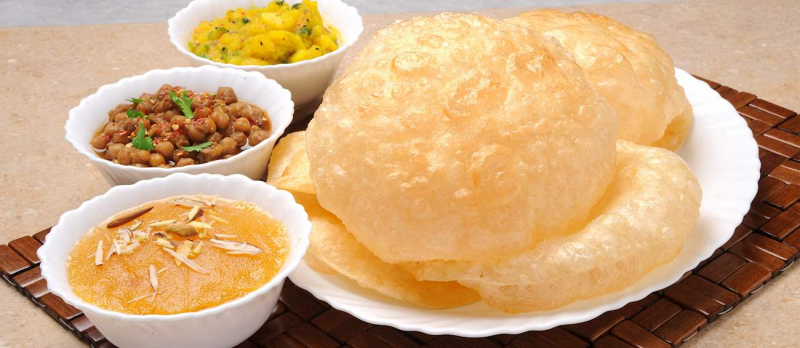
https://www.tasteatlas.com/ 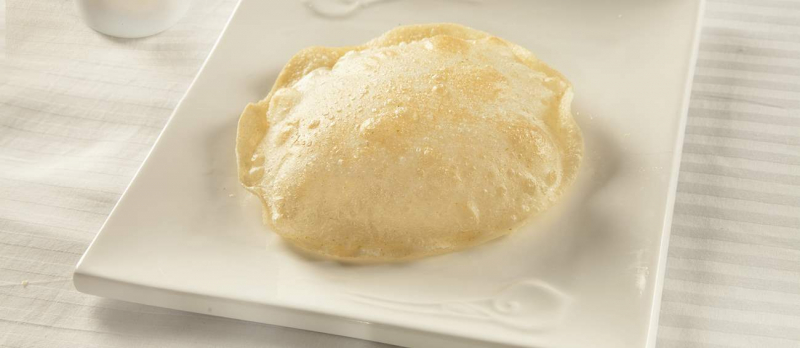
https://www.tasteatlas.com/













